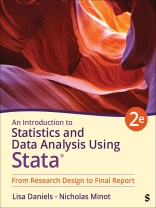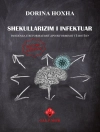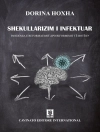An Introduction to Statistics and Data Analysis Using Stata®: From Research Design to Final Report, Second Edition provides an integrated approach to research methods, statistics and data analysis, and interpretation of results in Stata. Drawing on their combined 25 years of experience teaching statistics and research methods, authors Lisa Daniels and Nicholas Minot frame data analysis within the research process—identifying gaps in the literature, examining the theory, developing research questions, designing a questionnaire or using secondary data, analyzing the data, and writing a research paper—so readers better understand the context of data analysis. Throughout, the text focuses on documenting and communicating results so students can produce a finished report or article by the end of their courses.
The Second Edition has been thoroughly updated with all new articles and data—including coverage of Chat GPT, COVID-19 policies, and SAT scores—to demonstrate the relevance of data analysis for students. A new chapter on advanced methods in regression analysis allows instructors to better feature these important techniques. Stata code has been updated to the latest version, and new exercises throughout offer more chances for practice.
Jadual kandungan
Preface
Acknowledgments
Part I • The Research Process And Data Collection
Chapter 1 • A Brief Overview of the Research Process
1.1 Introduction
1.2 What Is Research
1.3 Steps In The Research Process
1.4 Conclusion
Exercises
Chapter 2 • Sampling Techniques
2.1 Introduction
2.2 Sample Design
2.3 Selecting A Sample
2.4 Sampling Weights
Exercises
Chapter 3 • Questionnaire Design
3.1 Introduction
3.2 Types Of Questionnaires
3.3 Guidelines For Questionnaire Design
3.4 Recording Responses
3.5 Skip Patterns
3.6 Ethical Issues
Exercises
Part II • Describing Data
Chapter 4 • An Introduction to Stata
4.1 Introduction
4.2 Opening Stata And Stata Windows
4.3 Working With Existing Data
4.4 Setting Preferences In Stata
4.5 Entering Your Own Data Into Stata
4.6 Using Log Files And Saving Your Work
4.7 Getting Help
4.8 Summary Of Commands Used In This Chapter
Exercises
Chapter 5 • Preparing and Transforming Your Data
5.1 Introduction
5.2 Checking For Outliers
5.3 Creating New Variables
5.4 Missing Values In Stata
5.5 Summary Of Commands Used In This Chapter
Exercises
Chapter 6 • Descriptive Statistics
6.1 Introduction
6.2 Types Of Variables And Measurement
6.3 Descriptive Statistics For All Types Of Variables: Frequency Tables And Modes
6.4 Descriptive Statistics For Variables Measured As Ordinal, Interval, And Ratio Scales: Median And Percentiles
6.5 Descriptive Statistics For Continuous Variables: Mean, Variance, Standard Deviation, And Coefficient Of Variation
6.6 Descriptive Statistics For Categorical Variables Measured On A Nominal Or Ordinal Scale: Cross Tabulation
6.7 Applying Sampling Weights
6.8 Formatting Output For Use In A Document (Word, Google Docs, Etc.)
6.9 Graphs To Describe Data
6.10 Summary Of Commands Used In This Chapter
Exercises
Part III • Testing Hypotheses
Chapter 7 • The Normal Distribution, Hypothesis Testing, and Statistical Significance
7.1 Introduction
7.2 The Normal Distribution And Standard Scores
7.3 Sampling Distributions And Standard Errors
7.4 Examining The Theory And Identifying The Research Question And Hypothesis
7.5 Testing For Statistical Significance Between A Sample Mean And A Population Mean
7.6 Rejecting Or Not Rejecting The Null Hypothesis
7.7 Interpreting The Results
7.8 Central Limit Theorem
7.9 Presenting The Results
7.10 Comparing A Sample Proportion To A Population Proportion
7.11 Summary Of Commands Used In This Chapter
Exercises
Chapter 8 • Testing a Hypothesis About a Single Mean and a Single Proportion
8.1 Introduction
8.2 When To Use The One-Sample t Test
8.3 Calculating The One-Sample t Test
8.4 Conducting A One-Sample t Test
8.5 Interpreting The Output
8.6 Presenting The Results
8.7 Estimating A Population Proportion From A Sample Proportion
8.8 Summary Of Commands Used In This Chapter
Exercises
Chapter 9 • Testing a Hypothesis About Two Independent Means
9.1 Introduction
9.2 When To Use A Two Independentsamples t Test
9.3 Calculating The t Statistic
9.4 Conducting A t Test
9.5 Interpreting The Output
9.6 Presenting The Results
9.7 Summary Of Commands Used In This Chapter
Exercises
Chapter 10 • One-Way Analysis of Variance
10.1 Introduction
10.2 When To Use One-Way ANOVA
10.3 Calculating The F Ratio
10.4 Conducting A One-Way ANOVA Test
10.5 Interpreting The Output
10.6 Is One Mean Different or are all of Them Different?
10.7 Presenting The Results
10.8 Summary Of Commands Used In This Chapter
Exercises
Chapter 11 • Comparing Categorical Variables – The Chi-Squared Test and Proportions
11.1 Introduction
11.2 When To Use The Chi-Squared Test
11.3 Calculating The Chi-Square Statistic
11.4 Conducting A Chi-Squared Test
11.5 Interpreting The Output
11.6 Presenting The Results
11.7 Comparing Proportions Or Binary Categorical Variables
11.8 Summary Of Commands Used In This Chapter
Exercises
Part IV • Exploring Relationships
Chapter 12 • Linear Regression Analysis
12.1 Introduction
12.2 When To Use Regression Analysis
12.3 Correlation
12.4 Simple Regression Analysis
12.5 Multiple Regression Analysis
12.6 Presenting The Results
12.7 Summary Of Commands Used In This Chapter
Exercises
Chapter 13 • Regression Diagnostics
13.1 Introduction
13.2 Measurement Error
13.3 Specification Error
13.4 Multicollinearity
13.5 Heteroscedasticity
13.6 Endogeneity
13.7 Nonnormality
13.8 Presenting The Results
13.9 Summary Of Commands Used In This Chapter
Exercises
Chapter 14 • Regression Analysis with Binary Dependent Variables
14.1 Introduction
14.2 When To Use Logit Or Probit Analysis
14.3 Understanding The Logit Model
14.4 Running A Logit Model
14.5 Interpreting The Results Of A Logit Model
14.6 Logit Versus Probit Regression Models
14.7 Presenting The Results
14.8 Summary Of Commands Used In This Chapter
Exercises
Chapter 15 • Introduction to Advanced Topics in Regression Analysis
15.1 Introduction
15.2 Regression With A Categorical Dependent Variable
15.3 Instrumental Variables Regression
15.4 Regression With Time-Series Data
15.5 Regression That Combines Cross-Section And Time-Series Data
15.6 Summary Of Commands Used In This Chapter
Exercises
Part V • Writing A Research Paper
Chapter 16 • Writing a Research Paper
16.1 Introduction
16.2 Introduction Section Of A Research Paper
16.3 Literature Review
16.4 Theory, Data, And Methods
16.5 Results
16.6 Discussion
16.7 Conclusions
Exercises
Appendices
Appendix 1 • Quick Reference Guide to Stata Commands
Appendix 2 • Summary of Statistical Tests by Chapter
Appendix 3 • Decision Tree for Choosing the Right Statistic
Appendix 4 • Decision Rules for Statistical Significance
Appendix 5 • Areas Under the Normal Curve (Z Scores)
Appendix 6 • Critical Values of the t Distribution
Appendix 7 • Stata Code for Random Sampling
Appendix 8 • Examples of Nonlinear Functions
Appendix 9 • Estimating the Minimum Sample Size
Appendix 10 Description of the Data Sets Used in the Textbook
Glossary
About the Authors
Index
Mengenai Pengarang
Nicholas Minot is a Senior Research Fellow at the International Food Policy Research Institute (IFPRI) in Washington, D.C. Since joining IFPRI in 1997, he has carried out research on agricultural market reform, income diversification, spatial patterns in policy, and food price volatility in developing countries. This research often involves carrying out surveys of farmers, cooperatives, traders, and consumers to better understand changes in food marketing systems. In addition to research, he is involved in outreach and capacity-building activities, including offering short courses on the use of Stata for survey data analysis. Before joining IFPRI, he taught at the University of Illinois in Urbana–Champaign, served as a policy adviser in Zimbabwe, and analyzed survey data in Rwanda. Overall, he has worked in more than two dozen countries in Latin America, sub-Saharan Africa, North Africa, and Asia.












